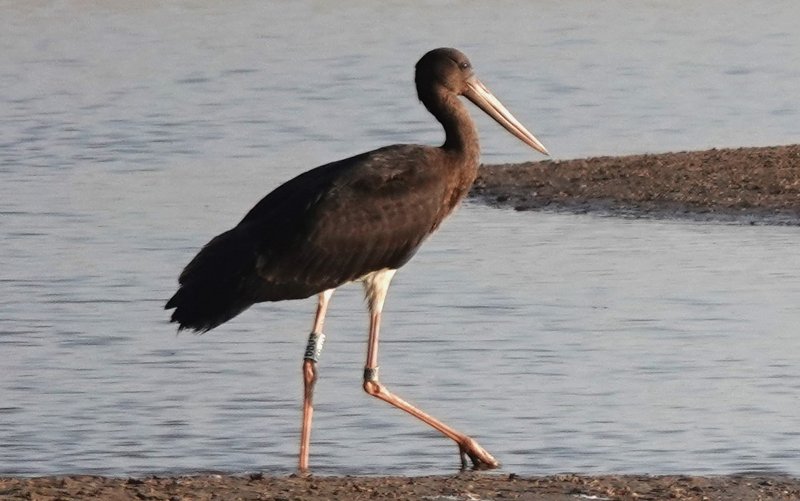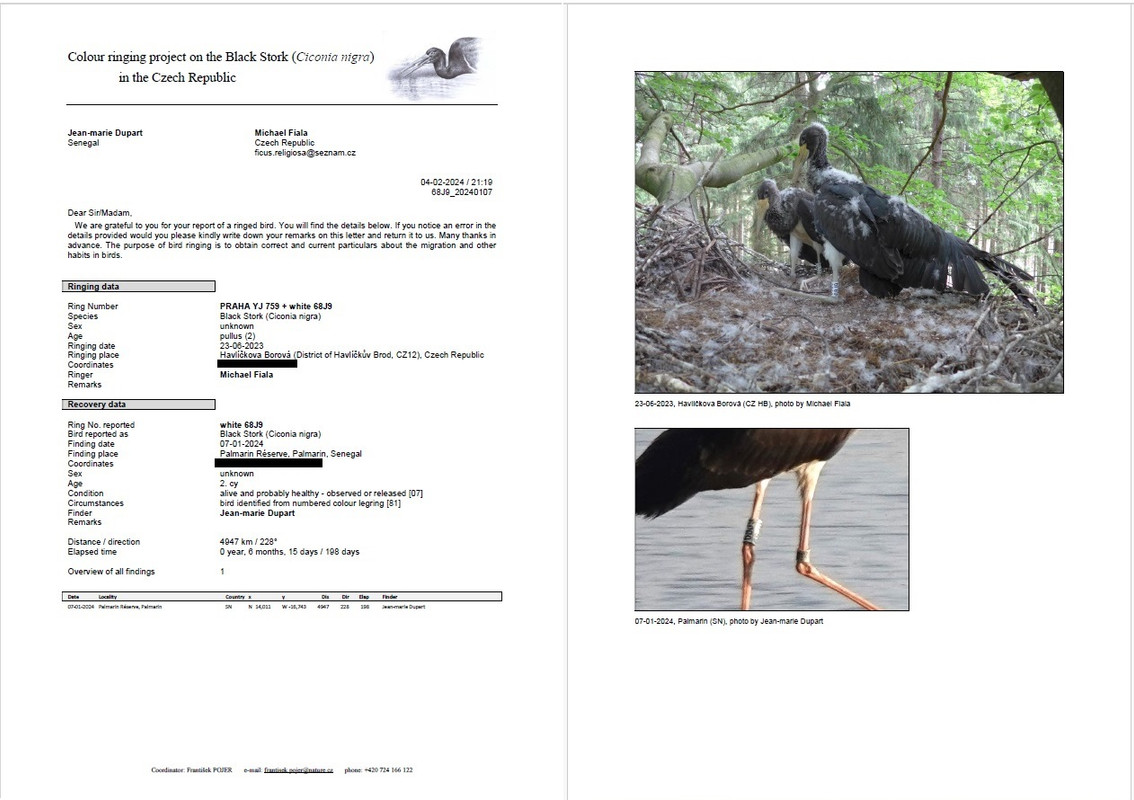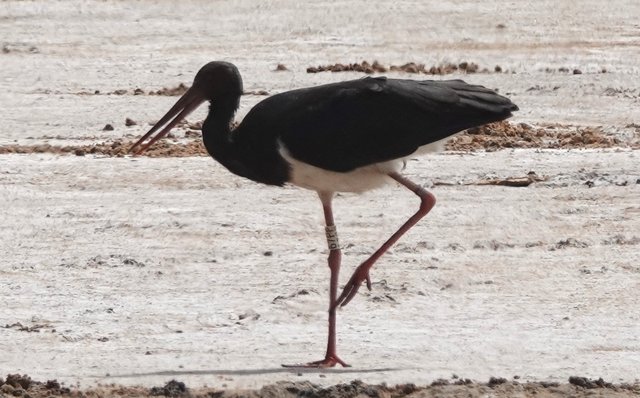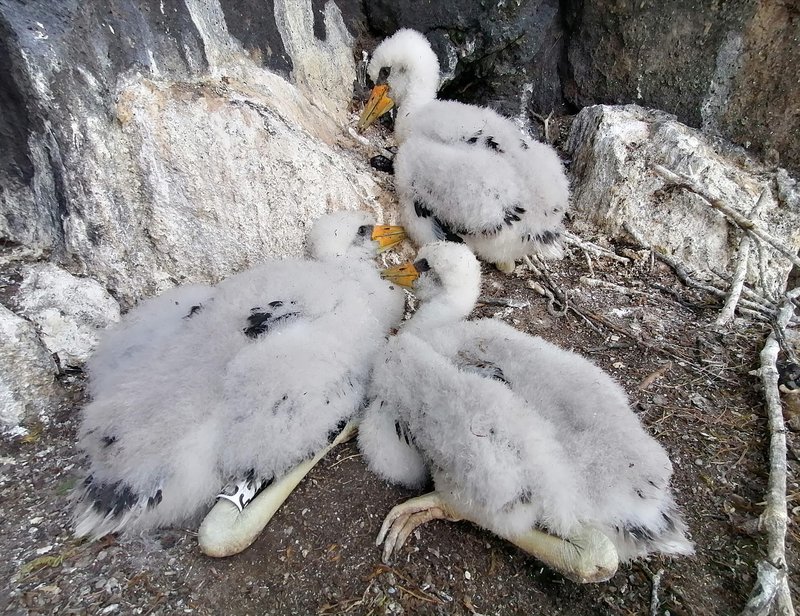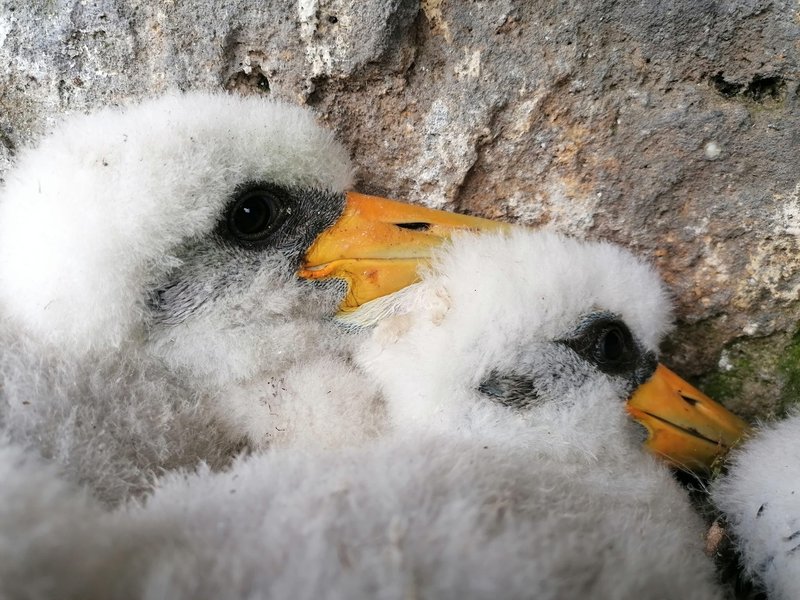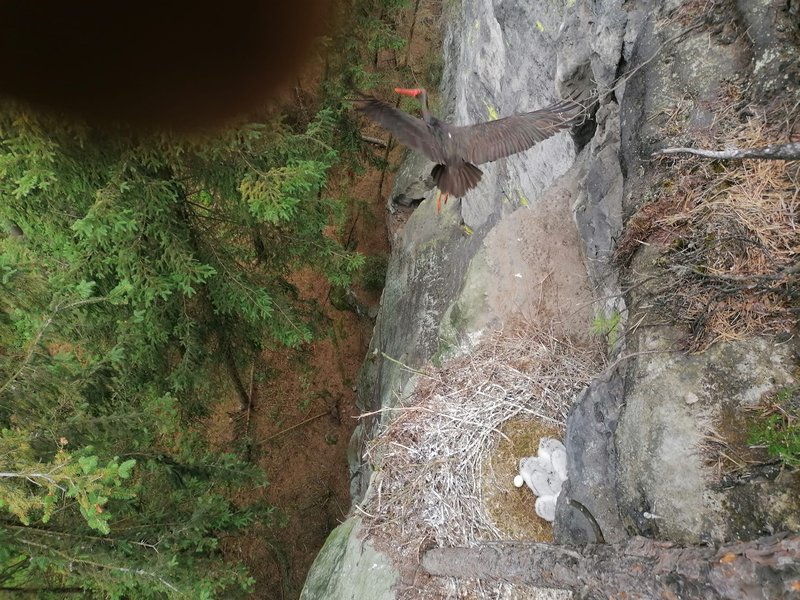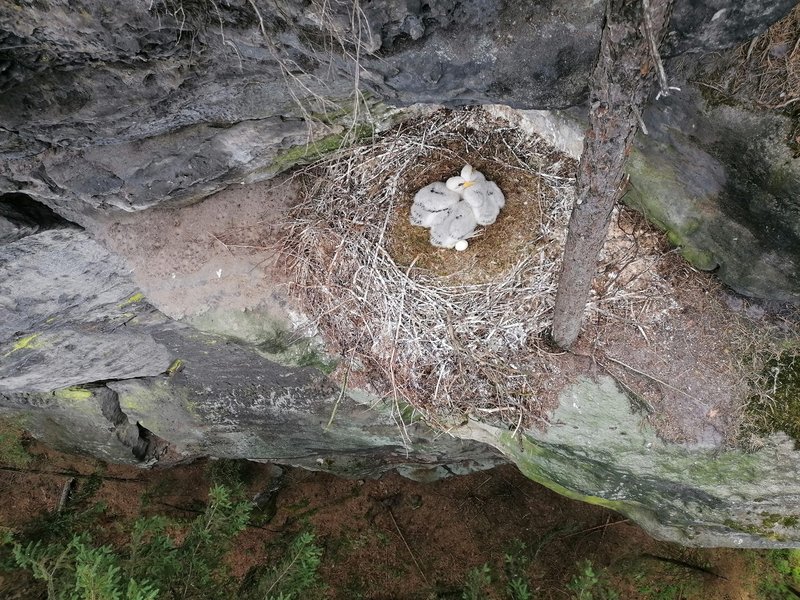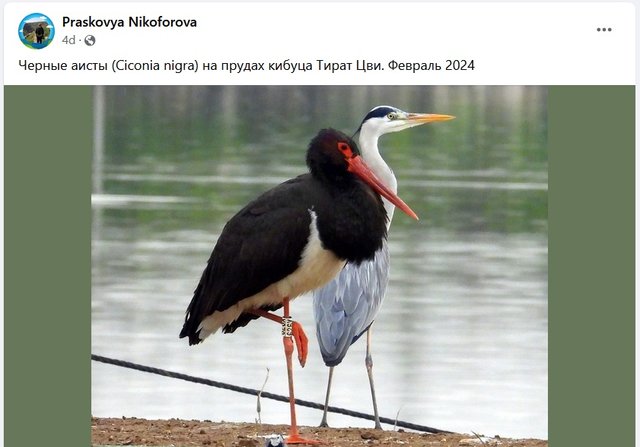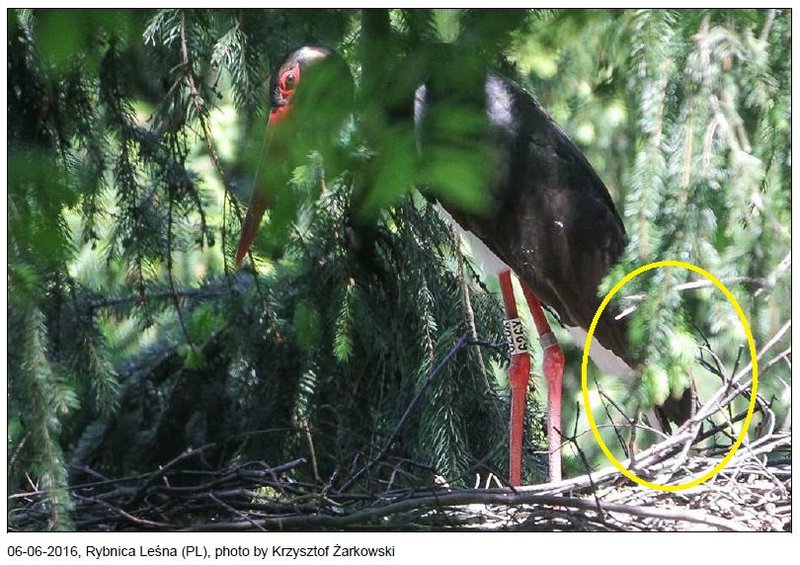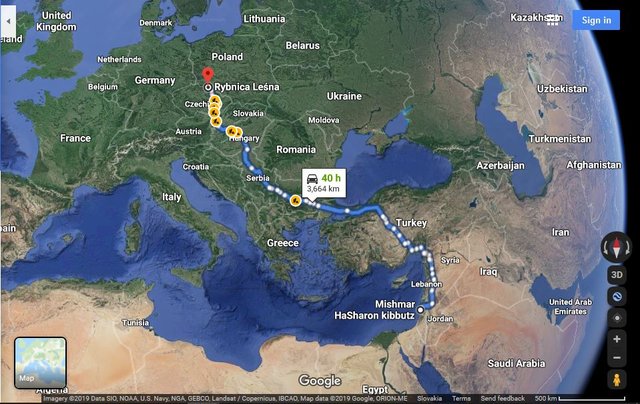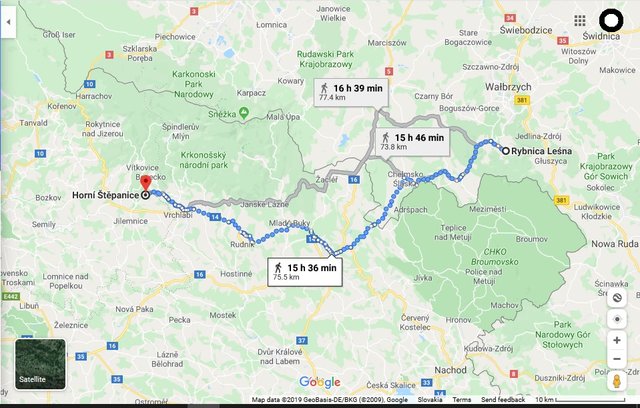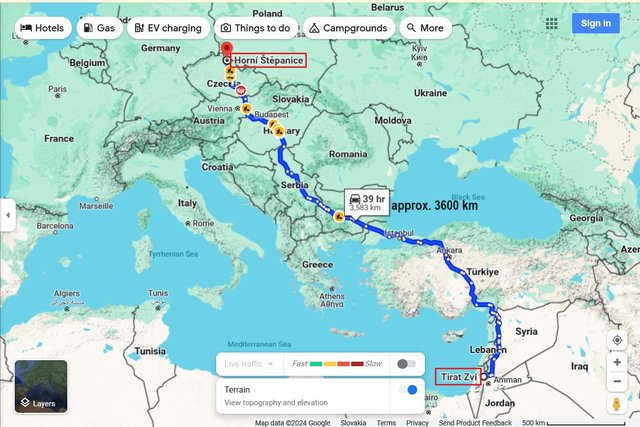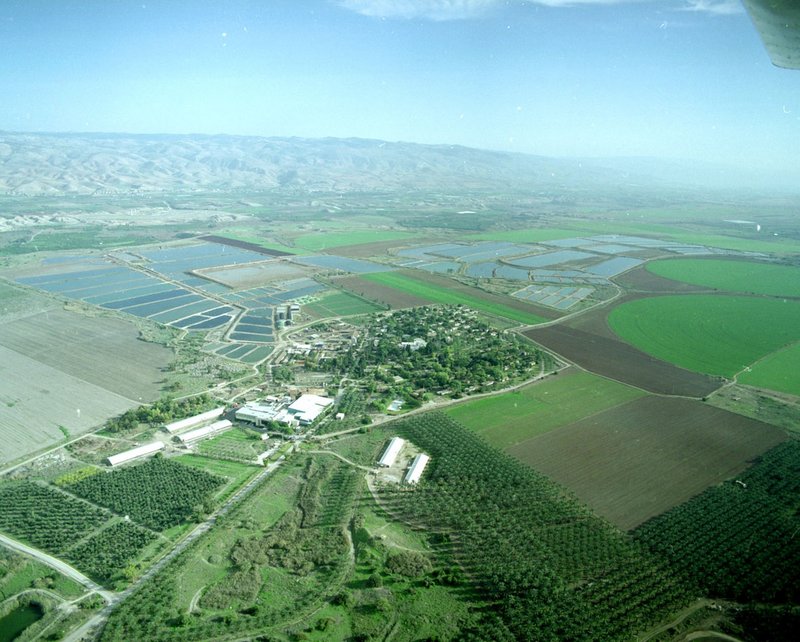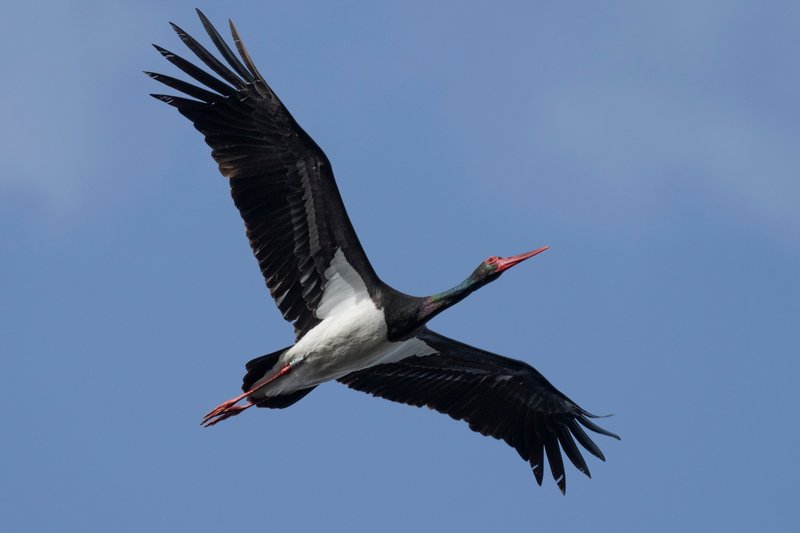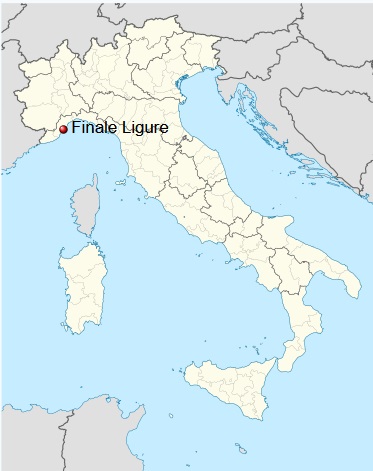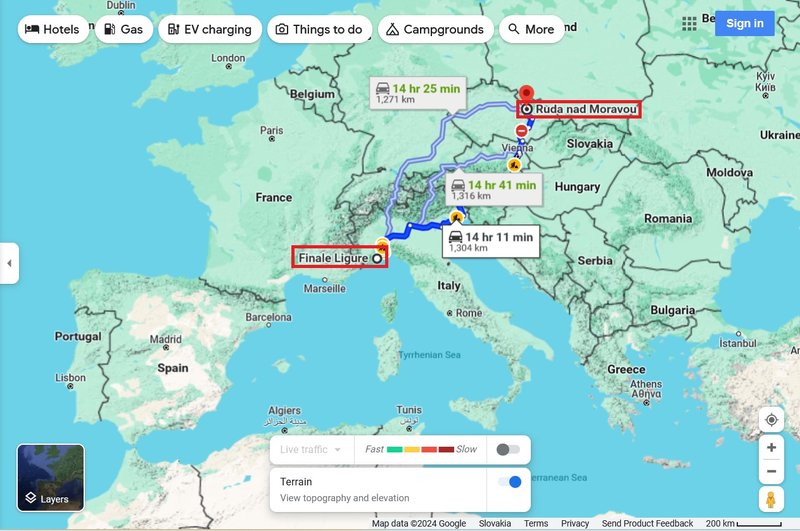GT translation - without corrections yet
Press Releases
České Švýcarsko National Park Administration: The black stork from České Švýcarsko was recorded in Africa for the first time. He's probably on his way back
February 27, 2024 | Administration of the NP České Švýcarsko
Author: Tomáš Salov , phone: 737 276 865
So far, the farthest place where a black stork originating from Czech Switzerland has been recorded is the coast of the Atlantic Ocean near the town of Joal in Senegal, roughly 90 kilometres south-east of Dakar. The white-circled stork with the code 67PP was photographed by French citizen Jean-Marie Dupart on February 19, 2024. His ornithological report was subsequently forwarded to the Nature and Landscape Protection Agency of the Czech Republic, the ringing station of the National Museum and to the ornithologists themselves from Czech Switzerland, who were Pavel Benda, Václav Sojka and Václav Šena. They ringed the young in June 2022 on a
rock nest in the Labe Canyon National Nature Reserve near Podskalí u Děčín. At present, the stork, together with others, is most likely already on its way back to Europe.
Petr Kříž, Director of the Administration of the Czech Switzerland National Park: "Black storks, but also peregrine falcons or great eagle owls,
get their chance to raise their young here primarily thanks to the fact that visitors respect their living space and provide them with the basic things that humans can provide you can. And
that's peace. Then we can also share joy together, perhaps from learning about the further life journeys of the young here."
In 2022, the podskalí
stork hatched together with two other siblings on a rock nest in the Labe Canyon National Nature Reserve. Extremely shy black storks usually nest in trees, but in the Czech Switzerland region, the terrain allows them to nest on rock ledges. In places where it is possible and safe for the birds, ornithologists circle the young. The rings enable additional bird monitoring and are designed so that the codes can be read from a greater distance. The sex of ringed young cannot be determined at the time of ringing, it can usually only be determined during further observations of the given individual.
Black storks are migratory birds. An interesting feature of
young black storks is that they are genetically given which migration route they take to their wintering grounds after flying out of the nest. Their parents don't teach them the route. Central European black storks head south in two directions, via the Iberian Peninsula or via the Balkans. It is likely that some storks winter in the south of Europe, many reports of storks ringed in Czech Switzerland come from the French Camargue or southern Spain. There are also reports from the Middle East, especially Israel. In the case of the black stork from Podskálí, this is the very first report from Africa.
In March, the period for protection of nesting sites begins, volunteer rangers and climbers help with protection
Black storks, together with peregrine falcons and great horned owls, belong to specially protected species for which the Administration of the Czech Switzerland National Park annually declares so-called
temporarily protected areas for the period from March 1 to the end of July. The measure applies to the immediate vicinity of the nests in the České Švýcarsko national park and in the PLA Labská pískovce and
consists in restricting access to visitors. The nesting sites are visibly marked with information boards and demarcation tapes so that people can avoid them and do not disturb the birds during nesting. In addition to its quiet areas, there are another 15 locations in the České Švýcarsko national park, and nine more locations in the Labské pískovce PLA. The measure does not result in any restrictions on the passage of visitors along the marked tourist routes.
Václav Sojka, ornithologist and ranger of the Czech Switzerland National Park: "The fact that storks, falcons, eagle owls and other species manage to raise their young in sufficient numbers here is a joint success and a business card of the consideration of all of us. České Švýcarsko and Labské pískovce are a vast area, in many cases the vulnerable species would not be able to ensure the necessary peace without the daily help of volunteer guards in the supervision of closed sites or without the consideration of climbers who spread information about known nests to their community and nest sites in a sensitive they avoid the season."
In addition to the marking of nesting sites directly in the terrain of the České Švýcarsko national park and the Elbe Sandstone protected landscape area, more detailed information about the nesting of black storks, peregrine falcons and great horned owls is available on the website of the České Švýcarsko National Park Administration, in the Do not disturb section! We are nesting! (
https://www.npcs.cz/prosime-nerusit-hnizdime).
Location in Senegal, where a black stork was recorded from Podskálí:
https://mapy.cz/s/jomuzudena
btw. I asked Mr. Václav Šena for sharing photos - they are beautiful


